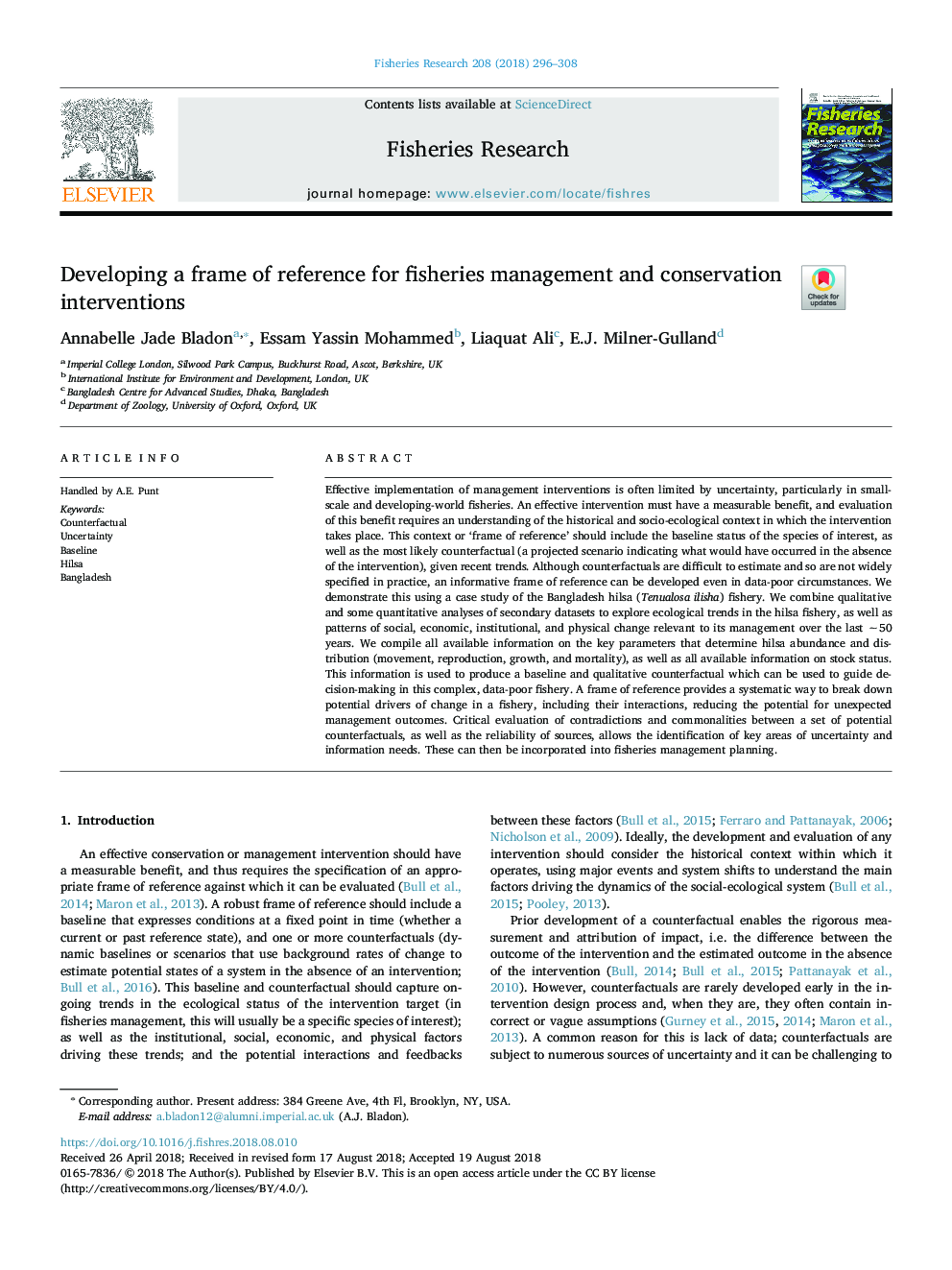| کد مقاله | کد نشریه | سال انتشار | مقاله انگلیسی | نسخه تمام متن |
|---|---|---|---|---|
| 11033200 | 1626762 | 2018 | 13 صفحه PDF | دانلود رایگان |
عنوان انگلیسی مقاله ISI
Developing a frame of reference for fisheries management and conservation interventions
ترجمه فارسی عنوان
ایجاد یک مرجع برای مدیریت ماهیگیری و مداخلات حفاظتی
دانلود مقاله + سفارش ترجمه
دانلود مقاله ISI انگلیسی
رایگان برای ایرانیان
کلمات کلیدی
متناقض، عدم قطعیت، خط مقدم، هیلسا، بنگلادش،
موضوعات مرتبط
علوم زیستی و بیوفناوری
علوم کشاورزی و بیولوژیک
علوم آبزیان
چکیده انگلیسی
Effective implementation of management interventions is often limited by uncertainty, particularly in small-scale and developing-world fisheries. An effective intervention must have a measurable benefit, and evaluation of this benefit requires an understanding of the historical and socio-ecological context in which the intervention takes place. This context or 'frame of reference' should include the baseline status of the species of interest, as well as the most likely counterfactual (a projected scenario indicating what would have occurred in the absence of the intervention), given recent trends. Although counterfactuals are difficult to estimate and so are not widely specified in practice, an informative frame of reference can be developed even in data-poor circumstances. We demonstrate this using a case study of the Bangladesh hilsa (Tenualosa ilisha) fishery. We combine qualitative and some quantitative analyses of secondary datasets to explore ecological trends in the hilsa fishery, as well as patterns of social, economic, institutional, and physical change relevant to its management over the last â¼50 years. We compile all available information on the key parameters that determine hilsa abundance and distribution (movement, reproduction, growth, and mortality), as well as all available information on stock status. This information is used to produce a baseline and qualitative counterfactual which can be used to guide decision-making in this complex, data-poor fishery. A frame of reference provides a systematic way to break down potential drivers of change in a fishery, including their interactions, reducing the potential for unexpected management outcomes. Critical evaluation of contradictions and commonalities between a set of potential counterfactuals, as well as the reliability of sources, allows the identification of key areas of uncertainty and information needs. These can then be incorporated into fisheries management planning.
ناشر
Database: Elsevier - ScienceDirect (ساینس دایرکت)
Journal: Fisheries Research - Volume 208, December 2018, Pages 296-308
Journal: Fisheries Research - Volume 208, December 2018, Pages 296-308
نویسندگان
Annabelle Jade Bladon, Essam Yassin Mohammed, Liaquat Ali, E.J. Milner-Gulland,
